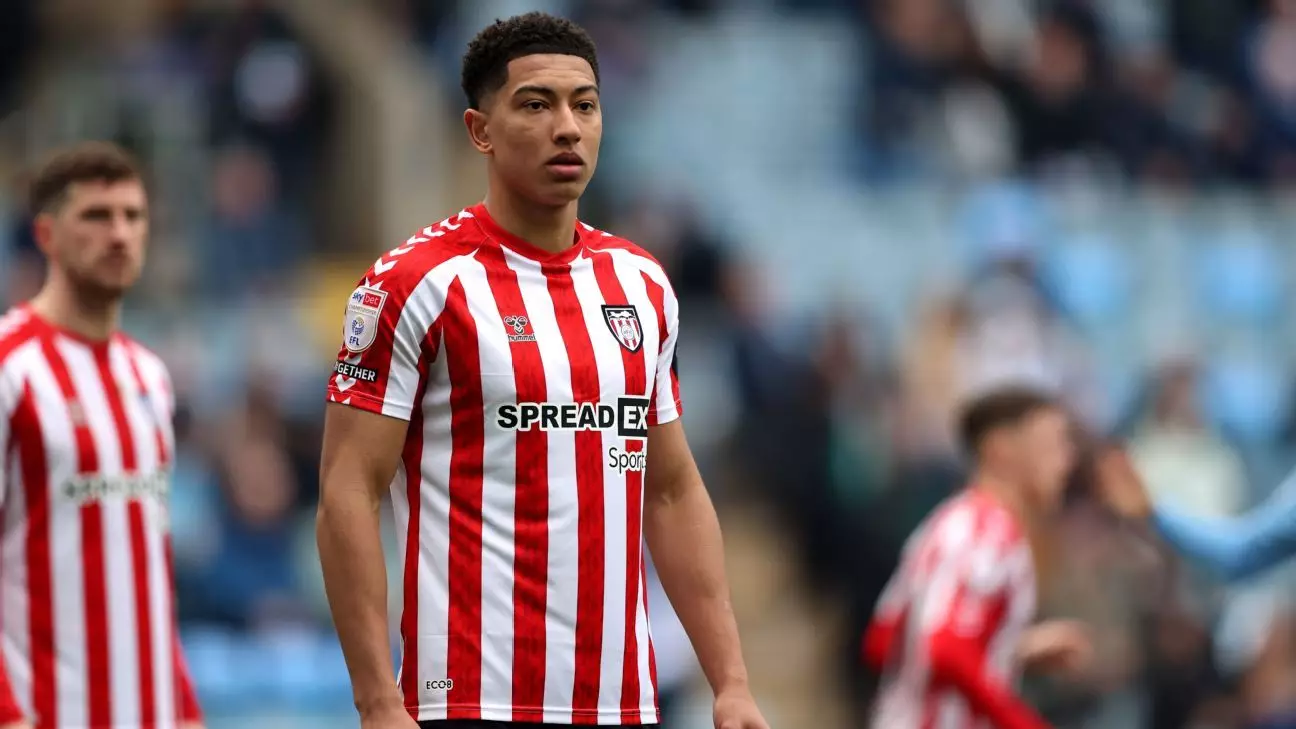In the ever-evolving world of football, transfers are often the lifeblood of a club’s success and future aspirations. The latest buzz in the transfer market signals a growing trend: the rise of emerging young talents. Specifically, clubs like RB Leipzig and Tottenham Hotspur are setting their sights on promising midfielders like Jobe Bellingham from Sunderland and Angel Gomes from Lille, respectively. This marks a crucial shift in strategy for teams aiming to rejuvenate their squads with youthful vigor rather than relying solely on established stars.
The case of Jobe Bellingham is particularly noteworthy. At only 19 years old, he has already drawn attention from multiple top clubs, and RB Leipzig’s interest highlights the growing recognition of talent emerging from unexpected places like Sunderland. Bellingham’s potential is palpable, even as Leipzig grapples with the financial implications of bringing him on board. Their initial valuation assessment suggests the stakes are high, illustrating how valuations of young players can reflect both their promise and market dynamics.
The Stakes of Competition
Tottenham Hotspur’s pursuit of Angel Gomes illustrates the intense competition brewing within Europe for precocious talents. Gomes, who is set to enter the market as a free agent this summer, has sparked interest from several clubs. It’s fascinating to observe how Spurs are actively watching Gomes, hoping he could seamlessly integrate into manager Ange Postecoglou’s tactical framework. The potential for Spurs to snag a player like Gomes without transfer fees could prove beneficial, particularly as they look to build a more dynamic midfield line-up.
This competition also sheds light on another critical aspect of player transfers: timing. The necessity for clubs to act swiftly is emphasized by Gomes’ rejection of a pre-contract agreement from West Ham. As rumors swirl and opportunities dwindle, the pressure mounts on clubs to not only identify talent but also to ensure they are swift and strategic in their negotiations.
Broader Implications for Transfer Strategies
On the other hand, Chelsea’s apparent interest in Nico Williams from Athletic Club reflects how big clubs are shifting their focus toward younger, marketable talents. For Chelsea, juggling their ambitions and the realities of financial fair play creates a complex web of decision-making—one that forces them to think critically about their projected Champions League qualification and how that directly impacts transfer capabilities.
Moreover, Williams being scouted by top-tier teams like Liverpool and Arsenal illustrates the importance of broadening horizons in search of fresh talent. In this case, it isn’t merely about chasing established names; it’s about recognizing the value of players who have both the potential for growth and significant market appeal. Chelsea’s pursuit of Williams could signify a willingness to adapt their strategy to align with contemporary market trends.
Reality Check for Established Stars
The nuance of the current transfer market isn’t just focused on burgeoning talent; it also reveals uncertainties surrounding established players. The situation with Dusan Vlahovic at Juventus underscores how the dynamics can shift for even the most promising and previously sought-after stars. Reports indicate that Vlahovic is contemplating his future, with no significant contract discussions having taken place. The Bianconeri face the delicate task of weighing his current output against the need for a financial refresh within the squad.
As Vlahovic’s commitment falters, it raises questions about how clubs might need to pivot in their strategies. Rather than solely bringing in youth, they might also need to consider offloading talents whose value seems to diminish amid contract negotiations. The interplay of keeping or parting ways with established players could drastically shape the make-up of teams going into the next season.
Manchester United’s Shift in Focus
Finally, Manchester United’s interest in RB Leipzig’s Xavi Simons is telling of how clubs perceive and prioritize their acquisitions. With a necessity to recalibrate their squad, United might see the midfield as a crucial area for reinforcement, particularly with the reported price tag exceeding €50 million. This expectation points to a broader trend: clubs must now find a delicate balance between making big investments and ensuring squad cohesion.
As the transfer window looms, the urgency to adapt strategies and the implications of rising young stars become clear. It’s not just about landing the next biggest name but cleverly investing in potential and quality that can turn clubs into championship contenders.

Leave a Reply